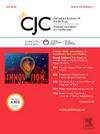射血分数减低性心力衰竭的心脏康复:病理生理学、益处和注意事项。
IF 5.3
2区 医学
Q1 CARDIAC & CARDIOVASCULAR SYSTEMS
引用次数: 0
摘要
心力衰竭(HF)是一种高度并发症,尽管目前的医疗管理取得了进步,但其死亡率却很高。心力衰竭患者属于高需求疾病护理人群,而心脏康复(CR)等结构化长期慢性病护理模式已被证明在减少住院次数和提高生活质量方面具有很高的成本效益。射血分数降低型心力衰竭(HFrEF)正影响着越来越多的加拿大人,而继发于这种疾病的医疗费用也在不断上升,预计在未来十年内还会进一步增加。心脏康复是针对射血分数降低患者的一种指导性医疗疗法,随着全球高血压患者人数的不断增加,治疗这种疾病的医护人员有必要重新审视这种干预措施的益处、安全性和处方。当然,高血脂医生在临床上需要更好地了解 CR 对运动训练的病理生理学益处,以及为安全实施这种极具成本效益的患者干预所需的谨慎预防措施。本文章由计算机程序翻译,如有差异,请以英文原文为准。
Cardiac Rehabilitation and Heart Failure with Reduced Ejection Fraction: Pathophysiology, Benefits, and Precautions
Heart failure (HF) is a highly comorbid condition associated with significant mortality, despite advances in current medical management. Patients who suffer from HF represent a high needs disease care population in whom structured, long-term chronic disease care delivery models, such as cardiac rehabilitation (CR), have been shown to be highly cost effective in reducing hospitalizations and improving quality of life. HF with reduced ejection fraction affects a growing number of Canadians and health care costs secondary to this condition are increasing, with further increases over the next decade to be expected. CR is a guideline-directed medical therapy for patients living with HF with reduced ejection fraction, and with increasing numbers of HF patients across the world, there is a prescient need to revisit the benefits, safety, and the prescription of this intervention for the health care professionals who treat this condition. Certainly, there is a clinical need for HF practitioners to better understand the pathophysiological benefits of CR with respect to exercise training, as well as the prudent precautions required to facilitate the safe delivery of this highly cost-effective patient intervention.
求助全文
通过发布文献求助,成功后即可免费获取论文全文。
去求助
来源期刊

Canadian Journal of Cardiology
医学-心血管系统
CiteScore
9.20
自引率
8.10%
发文量
546
审稿时长
32 days
期刊介绍:
The Canadian Journal of Cardiology (CJC) is the official journal of the Canadian Cardiovascular Society (CCS). The CJC is a vehicle for the international dissemination of new knowledge in cardiology and cardiovascular science, particularly serving as the major venue for Canadian cardiovascular medicine.
 求助内容:
求助内容: 应助结果提醒方式:
应助结果提醒方式:


